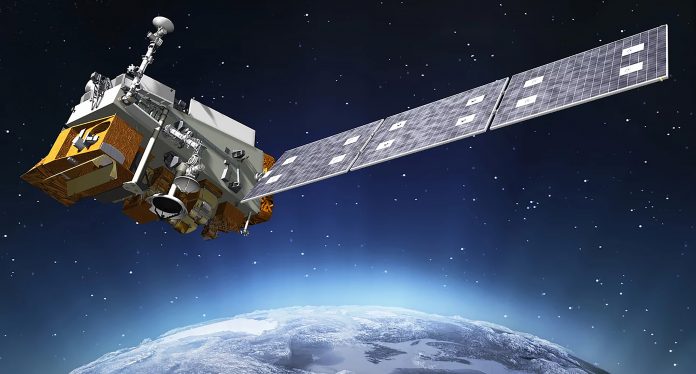
NASA is preparing to launch the Joint Polar Satellite System-1, or JPSS-1, satellite on behalf of the National Oceanic and Atmospheric Administration (NOAA) to provide essential data for timely and accurate weather forecasts and for tracking environmental events such as forest fires and droughts.
JPSS-1 is the first in NOAA’s series of four, next-generation operational environmental satellites designed to circle the Earth in a polar orbit. The JPSS program is a partnership between NOAA and NASA that will oversee all the satellites in the JPSS series. NOAA funds and manages the program, operations and data products. NASA develops and builds the instruments, spacecraft and ground system and launches the satellites for NOAA.
The mission is scheduled to begin at 4:47 a.m. EST (1:47 a.m. PST), Nov. 10, 2017, with JPSS-1 atop a United Launch Alliance (ULA) Delta II rocket lifting off from Space Launch Complex 2 (SLC-2) at Vandenberg Air Force Base in California.
Built by Ball Aerospace of Boulder, Colorado, the satellite will pass over the equator about 14 times each day, covering the globe twice every 24 hours. As it works, JPSS-1 will gather measurements of atmospheric, terrestrial and oceanic conditions, including sea and land surface temperatures, vegetation, clouds, rainfall, snow and ice cover, fire locations, atmospheric temperature, water vapor and ozone.
With these varied observations, JPSS will give environmental experts more accurate warnings in advance of hurricanes, tornadoes and blizzards. During its planned 10-years in orbit, JPSS-1 also will aid in assessing hazards such as droughts, forest fires, poor air quality and harmful coastal waters.
Preparations for the launch JPSS-1 rocket have been underway for more than a year. The first stage of the Delta II rocket arrived at Vandenberg’s NASA Hangar 836 on April 4, 2016. Later in the month, the Delta II interstage and second stage also reached the West Coast launch site.
On July 12, 2016, the first stage of the ULA Delta II rocket was transported to SLC-2 at Vandenberg and positioned on the launch pad. The rocket’s second stage was hoisted into the pad’s gantry on April 11, 2017, and mounted atop the first stage of the rocket.
The JPSS-1 satellite arrived at Vandenberg on Sept. 1, 2017, for preflight preparations in the Astrotech Processing Facility. Following checkouts, the spacecraft was encapsulated in its payload fairing and moved to SLC-2 and mounted atop the Delta II rocket.
JPSS-1 will follow the joint NOAA/NASA Suomi National Polar-orbiting Partnership, which was launched in 2011. Originally planned as a research and risk-reduction mission in the JPSS series, NOAA has been using Suomi NPP as its primary operational satellite for global weather observations since May 2014.
After it reaches orbit 512 miles above the Earth, JPSS-1 will be known as NOAA-20. Future satellites planned for the JPSS constellation include JPSS-2, scheduled for launch in 2021, JPSS-3 in 2026 and JPSS-4 in 2031. The series of four JPSS satellites are expected to span 20 years.
The U.S. government will make data from the JPSS system available to domestic and international users in support of U.S. commitments to the Global Earth Observation System of Systems (GEOSS)

